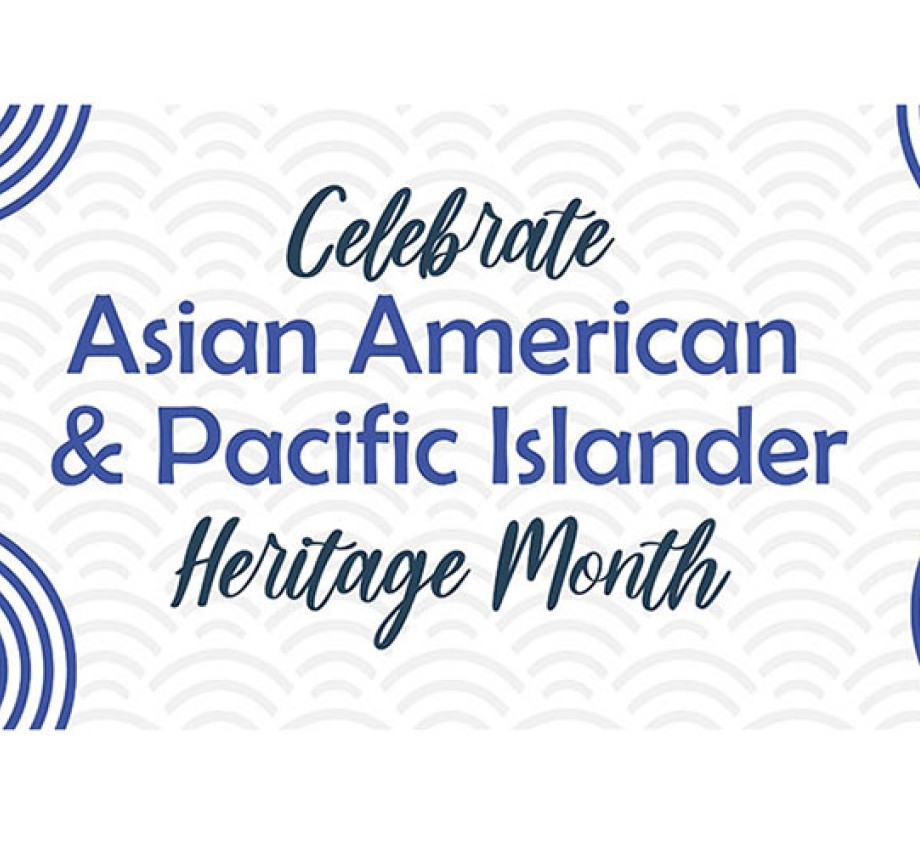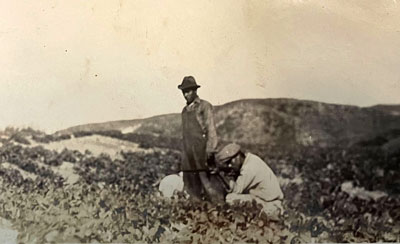Acknowledging the American in AAPI Heritage Month

The history behind Asian American Pacific Islander (AAPI) Heritage Month begins with two people with different Asian backgrounds influenced by two different eras in American history: Yuji Ichioka, who is largely credited with coining the term “Asian American,” and Jeanie Jew, a former Capitol Hill staffer.
Jew first approached New York Congressman Frank Horton in the mid-1970s about introducing a bill that called for May to be designated for acknowledging those of Asian and Pacific Islander descent.
According to Time magazine, “For Jew, the lack of recognition was very personal: Her great-grandfather, M.Y. Lee, had come to the U.S. from China in the 1800s and had helped build the transcontinental railroad. He and his peers had played a key role in American history but had suffered for it.
“The revelations about Mr. Lee and the story of Asian Americans led this one woman to believe that not only should Asians understand their own heritage, but that all Americans must know about the contributions and histories of the Asian-Pacific American experience in the United States.”
What started out in 1977 as a proposal for the first 10 days in May to commemorate Asian and Pacific Islander American contributions eventually became Asian/Pacific American Heritage Week in 1979, thanks to Rep. Horton of New York and Senator Daniel Inouye of Hawaii. Then in 1990, the seven-day acknowledgement for Asian and Pacific Americans’ heritage became a commemorative month that was signed into law by President George H.W. Bush. In 1992—yes, 17 years after it was first proposed—Horton, along with multiple co-sponsors, introduced legislation that would permanently designate May as Asian/Pacific American Heritage Month. In 2009, President Barack Obama signed the proclamation making it Asian American Pacific Islander Heritage Month.
The month is now observed by the country's 22.9 million Asians and Asian Americans and 1.6 million Native Hawaiian and Other Pacific Islanders.
Thank you, Jeanie Jew.
The Significance of May
AAPI Heritage Month is a celebration of many different cultures. One of the largest and fastest-growing ethnic groups in the U.S., the AAPI population is projected to surpass 46 million by 2060.
The term AAPI encompasses “all of the Asian continent and the Pacific islands of Melanesia (New Guinea, New Caledonia, Vanuatu, Fiji and the Solomon Islands), Micronesia (Marianas, Guam, Wake Island, Palau, Marshall Islands, Kiribati, Nauru and the Federated States of Micronesia) and Polynesia (New Zealand, Hawaiian Islands, Rotuma, Midway Islands, Samoa, American Samoa, Tonga, Tuvalu, Cook Islands, French Polynesia and Easter Island),” according to the joint historical societies under The Library of Congress.
The United States and Asian immigration have a complicated history—even in what are now considered liberal or progressive Bay Area communities.
The Asia Society website explains: “In response to the challenge of changing demographics more than a century ago, the San Francisco School Board established a segregated Chinese Primary School for Chinese children to attend, including those who were American-born. By the turn-of-the-century after Japanese immigrants had settled in the wake of Chinese exclusion, the School Board also applied the Chinese segregation policy to Japanese students.”
This seems to be one more thing in a legacy of exclusion and inequality for Asians and Pacific Islanders arriving in America.

Asia Society continues, “In spite of historic, linguistic differences, distinct Asian nationalities have been grouped together and treated similarly in schools and in the larger society. By 1924, with the exception of Filipino ‘nationals,’ all Asian immigrants—including Chinese, Japanese, Koreans and Indians—were fully excluded by law, denied citizenship and naturalization, and prevented from marrying Caucasians or owning land.”
Unfortunately, it wasn’t long before Filipinos also began to feel racism due to economic competition. And despite providing manual farm and industrial labor, Filipinos were excluded from entry into the U.S. because of the Tydings-McDuffie Act of 1935, which placed an annual quota of 50 on Filipino migration.
Asia Society’s article “Asian Americans Then and Now” also reports, “During the half century from 1882 to 1935, three waves of early Asian immigrants contributed their labor to the building of this country but were eventually denied entry and not granted naturalization rights until 1952. Though coming from different countries and cultures, the pioneering Chinese, Japanese, Koreans, Indians and Filipinos each faced similar conditions of exclusion, which forged the beginnings of a common, shared Asian experience in America.”
One immigrant who recognized the common experience is Yuji Ichioka, a Japanese American historian and civil rights activist, who was relocated with his family from San Francisco to Topaz internment camp in Millard County, Utah, during World War II. Approximately 120,000 Japanese and Japanese Americans were incarcerated in internment camps all over the United States, just for their heritage. Yuji, according to Densho, is credited with first using the term “Asian American.”
“By helping to unify different Asian ethnic groups (e.g., Japanese Americans, Chinese Americans, Filipino Americans, etc.) under a single, self-defining term, Ichioka paved the way for greater prominence and understanding of people of Asian descent in the U.S. Born in San Francisco in 1936, Ichioka served three years in the military, then earned degrees from University of California campuses in Los Angeles and Berkeley. He founded the Asian American Political Alliance in 1968 and helped to establish the Asian American studies program at UCLA. With his wife, Emma Gee, Ichioka established the Yuji Ichioka and Emma Gee Endowment for Social Justice and Immigration Studies at UCLA’s Asian American Studies Center.”
Both Jeanie’s and Yuji’s personal experiences have shaped American history and recognize the need to continue to make known the plight of and contributions by this group of peoples. And the first 10 days in May are significant.
“May was chosen to commemorate the immigration of the first Japanese to the United States on May 7, 1843, and to mark the anniversary of the completion of the transcontinental railroad on May 10, 1869. The majority of the workers who laid the tracks were Chinese immigrants.”
Advancing Leaders Through Collaboration
When then-presidential candidate Joe Biden selected then-California’s junior U.S. Senator Kamala Harris to be his running mate as Vice President of the United States, he helped add another notable to Asian American history contributions: She is the first person of South Asian descent to hold the office.
When President Biden issued a proclamation on April 30, 2021, he recognized “the history and achievements of Asian Americans, Native Hawaiians and Pacific Islanders (AANHPI) across our nation” in the middle of a year with anti-Asian racism taking place throughout the country.
“In the midst of a difficult year of pain and fear, we reflect on the tradition of leadership, resilience and courage shown by AANHPI communities, and recommit to the struggle for AANHPI equity,” the proclamation read.
“We also celebrate and honor the invaluable contributions the AANHPI communities have made to our Nation's culture and the arts, law, science and technology, sports and public service—including the courageous AANHPIs who have served on the front lines of the COVID-19 pandemic as health care providers, first responders, teachers and other essential workers.”
As such, the AAPI Month theme for 2022 builds on this in “Advancing Leaders Through Collaboration,” according to the Federal Asian Pacific American Council (FAPAC), an organization that “encourages local and national governments to prioritize collaboration, development, diversity, transparency and inclusion through leadership training of AAPI people.”
Countless others who have arrived on American shores from Asia and Pacific Ocean islands in search of something better have made their own contributions to Asian American Pacific Islander cultural heritage.
Here are just a few of other notable AAPI figures in U.S. history, ranging from science and technology, to politics and the arts:
- Ajay Bhatt, an Indian-born computer architect
- Anna May Wong, the first Chinese American film star in the U.S.
- Cecilia Chung, an internationally recognized civil rights leader, a social justice advocate, and the first transgender woman and first Asian to be elected to lead the Board of Directors of the San Francisco Lesbian, Gay, Bisexual, and Transgender Pride Celebration
- Chien-Shiung Wu, the first lady of physics
- Dalip Saund, the first Asian American, Indian American and first Sikh U.S. Representative to be sworn into Congress
- Duke Kahanamoku, a Native Hawaiian Olympic gold medalist, surfer and actor, was a five-time Olympic medalist in swimming and known as “The Big Kahuna” in surfing
- George Takei, a Japanese American actor and civil rights activist who blazed a trail for Asian Americans in the performing arts
- Grace Lee Boggs, a Taishanese American author, philosopher and feminist, and a key figure in the development of the Asian American movement
- Haing S. Ngor, a Cambodian American surgeon, actor and author, is the only actor of Asian descent to ever win an Academy Award for Best Supporting Actor, and only one of two non-professional actors to win an acting Oscar
- I.M. Pei, a Chinese American architect, designed some of the nation’s most iconic buildings, including the John F. Kennedy Memorial Library, the Herbert F. Johnson Museum of Art and the Rock & Roll Hall of Fame and Museum, among many others
- Kalpana Chawla, an Indian American astronaut and engineer, was the first woman of Indian descent to go to space, having served as a mission specialist and primary robotic arm operator on the space shuttle Columbia
- Larry Itliong, a labor leader who organized West Coast agricultural workers and co-founded the United Farm Workers
- Patsy Matsu Takemoto Mink, a Japanese American politician and an attorney, pursued a law degree after being rejected by all 12 medical schools to which she applied. She became the first woman with Japanese ancestry to serve in Hawaii’s territorial House, the first Hawaiian woman elected to U.S. Congress and the first woman of color elected to the House.
- Steve Chen, a Taiwanese immigrant who is the co-founder of YouTube
- Tammy Duckworth, the first Thai American woman elected to U.S. Congress, is the first woman with a disability elected to U.S. Congress, the first female double amputee in the Senate, and the first U.S. senator to give birth while in office.
- Wong Kim Ark, a Chinese American cook, was named in the 1898 landmark decision by the U.S. Supreme Court, known as United States v. Wong Kim Ark, 169 U.S. 649, which established an important precedent for birthright citizenship.
- Yuri Kochiyama, a Japanese American, political activist and founder of Asian Americans for Action
Despite the anti-Asian/Asian American sentiment that has increased in recent years, Asian and Pacific Islander Americans continue to drive the culture, politics and landscape that make the United States, America.
Community Events and Resources
AAPI Heritage Month Resources (UC Berkeley)
Diversity Events and Celebrations (UC Berkeley)
Oakland Asian Cultural Center Educational Workshops
San Francisco Asian American Heritage Month Events (Eventbrite)
AAPI Community Festival in Oakland, CA, May 1
AAPI Cultural Festival in Mountain View, CA, May 14
AAPI Heritage Night in San Carlos, CA, May 27